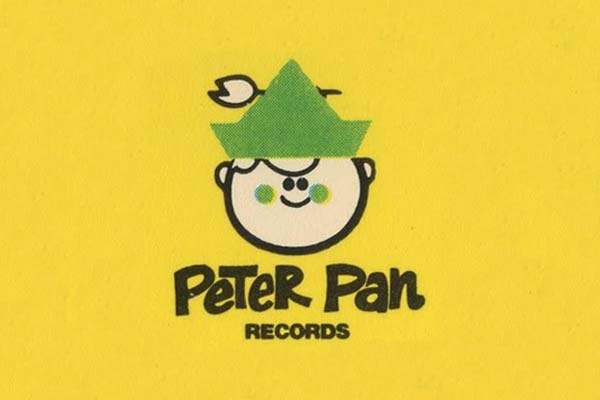https://www.bedlamcreations.com/custom-waterslide-decals/custom-restoration-waterslide-decals/
- May 2024
-
www.bedlamcreations.com www.bedlamcreations.com
- Jan 2024
-
gitlab.com gitlab.com
-
Another example are issue boards. They represent elegant use of a good infrastructure — it is all just a smart use of labels. It would be very complex feature without the use of labels.
-
- Sep 2023
-
www.bbc.com www.bbc.com
-
Culture
bbc.com form fields have associated labels. Good practice is to provide clear and visible labels for form fields.
-
- Jun 2023
-
musictheory.pugetsound.edu musictheory.pugetsound.edu
-
Chord Labels
should actually be referred to as chord labels
-
- Aug 2022
-
maggieappleton.com maggieappleton.com
-
Half the time I begin typing something, I'm not even sure what I'm writing yet. Writing it out is an essential part of thinking it out. Once I've captured it, re-read it, and probably rewritten it, I can then worry about what to label it, what it connects to, and where it should 'live' in my system.
One of my favorite things about Hypothes.is is that with a quick click, I've got a space to write and type and my thinking is off to the races.
Sometimes it's tacitly (linked) attached to another idea I've just read (as it is in this case), while other times it's not. Either way, it's coming out and has at least a temporary place to live.
Later on, my note is transported (via API) from Hypothes.is to my system where I can figure out how to modify it or attach it to something else.
This one click facility is dramatically important in reducing the friction of the work for me. I hate systems which require me to leave what I'm doing and opening up another app, tool, or interface to begin.
-
- Jun 2022
- May 2021
-
github.com github.com
Tags
Annotators
URL
-
- Apr 2021
-
github.com github.com
-
Actually, I've decided to stop using labels for a while. A "bug" label gives the impression that someone else is going to fix the problem. We don't have enough volunteers for that (new contributors welcome!). I try to help people working on issues, though. I've spent many hours on this one.
-
- Mar 2021
-
css-tricks.com css-tricks.com
-
You don’t need to do any tricky cursor stuff, because it’s all semantically wired up already.
-
I’d say if the form is short and an obvious pattern (like sign up or log in), you could use the placeholder visual pattern, but use real labels instead.
-
If they click the area taken up by the label, it will activate the input. If they click the input, it will activate the input. Both correct.
-
- Nov 2020
-
uxdesign.cc uxdesign.cc
-
I like to keep the ‘verb’ + ‘noun’ structure when writing button labels — this makes the action more prescriptive, e.g. ‘Save post’, ‘Next step’, etc, as opposed to ‘Save’, ‘Next’
-
-
github.com github.com
-
priority: 5 (nice to have) semver: Minor severity: 5 (confusing) type: Feature
-
- Oct 2020
-
github.com github.com
-
first sighting: use of superscripts like this
I like it. Nice and concise and understandable.
- s¹  critical
- s²  important
- s³  nice to have
- s⁴  low
- s⁵  inconvenient
But in other cases, the abbreviation is quite unclear and ambiguity:
Like, what does "pr" mean in these cases?
priority? Doubt it.
- pr¹  chore
- pr²  docs
- pr³  feature
- pr⁴  fix
- pr⁵  performance
- pr⁶  refactor
- pr⁷  style
Pull Request? Doubt it. But maybe?
For axes that are quantifiable, like severity, using a number makes sense. But what benefit is there in including a number in these (platform?) labels?:
- p¹ ⋅ browser
- p² ⋅ linux
- p³ ⋅ mac
- p⁴ ⋅ windows
I think this would have been better and clearer (in that fewer people would be like huh? and wonder what it means):
- platform: browser
- platform: linux
- platform: mac
- platform: windows
-
-
www.bloomberg.com www.bloomberg.com
-
A 2015 clip about vaccination from iHealthTube.com, a “natural health” YouTube channel, is one of the videos that now sports a small gray box.
Does this box appear on the video itself? Apparently not...
Examples:
But nothing on the embedded version:
A screengrab of what this looks like:

-
- May 2020
-
gitlab.com gitlab.com
-
-
Priority labels
-
Type labels are very important. They define what kind of issue this is. Every issue should have one and only one.
-
Sometimes it's useful to refine the type of an issue. In those cases, you can add facet labels.
-
Labeling is a task for everyone.
-
-
github.com github.com
-
Labeling Issues
-
-
gitlab.com gitlab.com
Tags
Annotators
URL
-
-
gitlab.com gitlab.com
Tags
Annotators
URL
-
- Apr 2020
-
medium.com medium.com
-
The “universal” label that has been slapped on to it is superfluous, but it does have its merits. Now that we have a commonly known term to refer to environment agnostic JavaScript code, it allows library authors to list it as a feature and be fashionable doing it. I’m happy with the term “universal” being fashionable because it makes developers think about their dependencies on the runtime environment. In the end this will help the JavaScript ecosystem mature and allow libraries to be used everywhere.
-
The “universal” label that has been slapped on to it is superfluous
-
- Nov 2019
-
dh101.humanities.ucla.edu dh101.humanities.ucla.edu
-
or semantic value, is crucial to the production of information visualization. But any sense that “data” has an inherent “visual form” is an illusion.
Eye grabbing word: Semantic Value and the statement "But any sense that data has an inherent visual for is an illusion" is a very interesting statement.
-
- Jul 2019
-
bookbook.pubpub.org bookbook.pubpub.org
-
a label will inform the program “this is a cat,” and not a cheeseburger - despite some visual similarity and the former perhaps having the latter.
This is the label you were hoping someone would put on this right?
Image courtesy of icanhascheeseburger.
-
- Oct 2018
-
www.theatlantic.com www.theatlantic.com
-
It seems like everyday you wake up something has changed … Do you say Jew? Or Jewish? Is it a black guy? African-American? … You are on your toes because you never know what to say. So political correctness in that sense is scary.
-
- Feb 2018
-
-
directions provided with TITLE
Should titles ever be used for directions? Don't they override (or are overridden) by labels in some assistive techgnologies?
-
- Dec 2017
-
-
For example, if there are multiple "Submit" buttons on a screen, the Name for each must be unique
This seems questionable. If there are "edit" buttons beside each element in a list of elements, must they all have different names, or can their function be inferred from context? I don't think WCAG requires this.
-
Check each input form field for an ID and a corresponding LABEL or a descriptive TITLE. Fieldset and Legend may be used for grouping and associating two instructions to one input field.
Does this mean wrapping an edit field with a label is not sufficient? Do such labels need a for attribute pointing to the id of the field?
-
A web page that has multiple form controls (e.g. buttons) with the same visual label must include unique identifiers that describe their unique purpose.
This seems questionable. If there are "Add" buttons beside each element in a list of elements, must they all have different names, or can their function be inferred from context? I don't think WCAG requires this.
-
